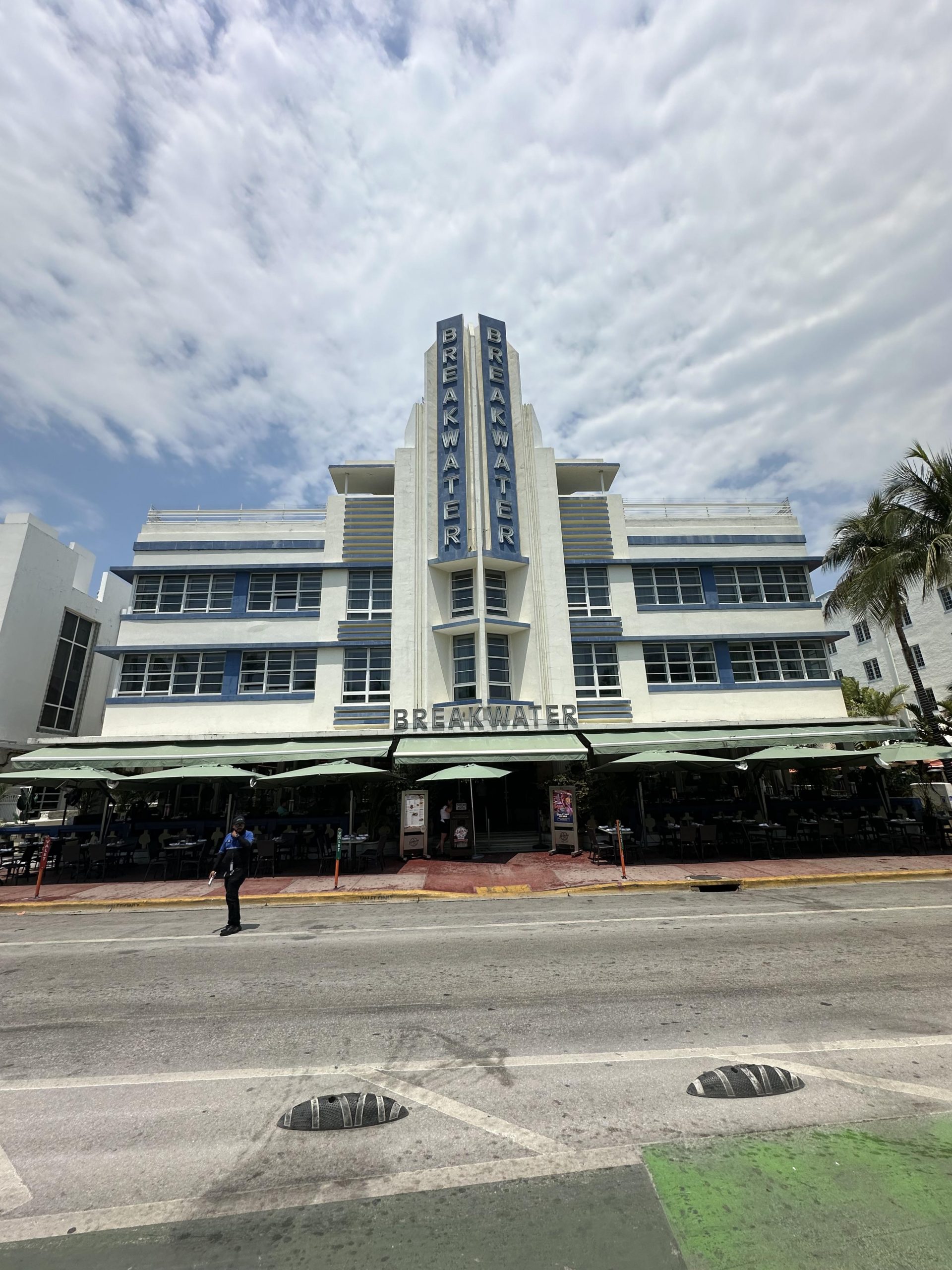 Miami’s Art Deco architecture stands out globally, not only for its vibrant aesthetics but also for the unique way it incorporates tropical and local elements. While Art Deco originated in Paris and was popular worldwide during the 1920s and 1930s, Miami developed its own distinctive version of the style, often referred to as “Tropical Art Deco.”
Miami’s Art Deco architecture stands out globally, not only for its vibrant aesthetics but also for the unique way it incorporates tropical and local elements. While Art Deco originated in Paris and was popular worldwide during the 1920s and 1930s, Miami developed its own distinctive version of the style, often referred to as “Tropical Art Deco.”
Key Differences Between Miami Art Deco and Global Art Deco:
- Tropical Influences:
- While traditional Art Deco around the world focuses on geometric shapes and industrial themes, Miami’s adaptation incorporates tropical motifs. You’ll find design elements such as palm trees, flamingos, waves, and even sunbursts. The architecture is a reflection of Miami’s location and culture, blending the glamour of Art Deco with the breeziness of a seaside resort.
- The buildings are lighter and more playful compared to the more formal and opulent Art Deco styles seen in places like New York or Paris.
- Color Palette:
- Global Art Deco tends to use richer, more muted tones like gold, black, silver, and jewel tones. Miami, on the other hand, stands out for its pastel colors. Soft pinks, blues, yellows, and greens dominate the landscape, reflecting the beach and tropical environment.
- These colors not only add vibrancy but also interact beautifully with the natural Miami sunlight, creating a dynamic and inviting atmosphere, unlike the heavier, industrial feel of many Art Deco buildings in other cities.
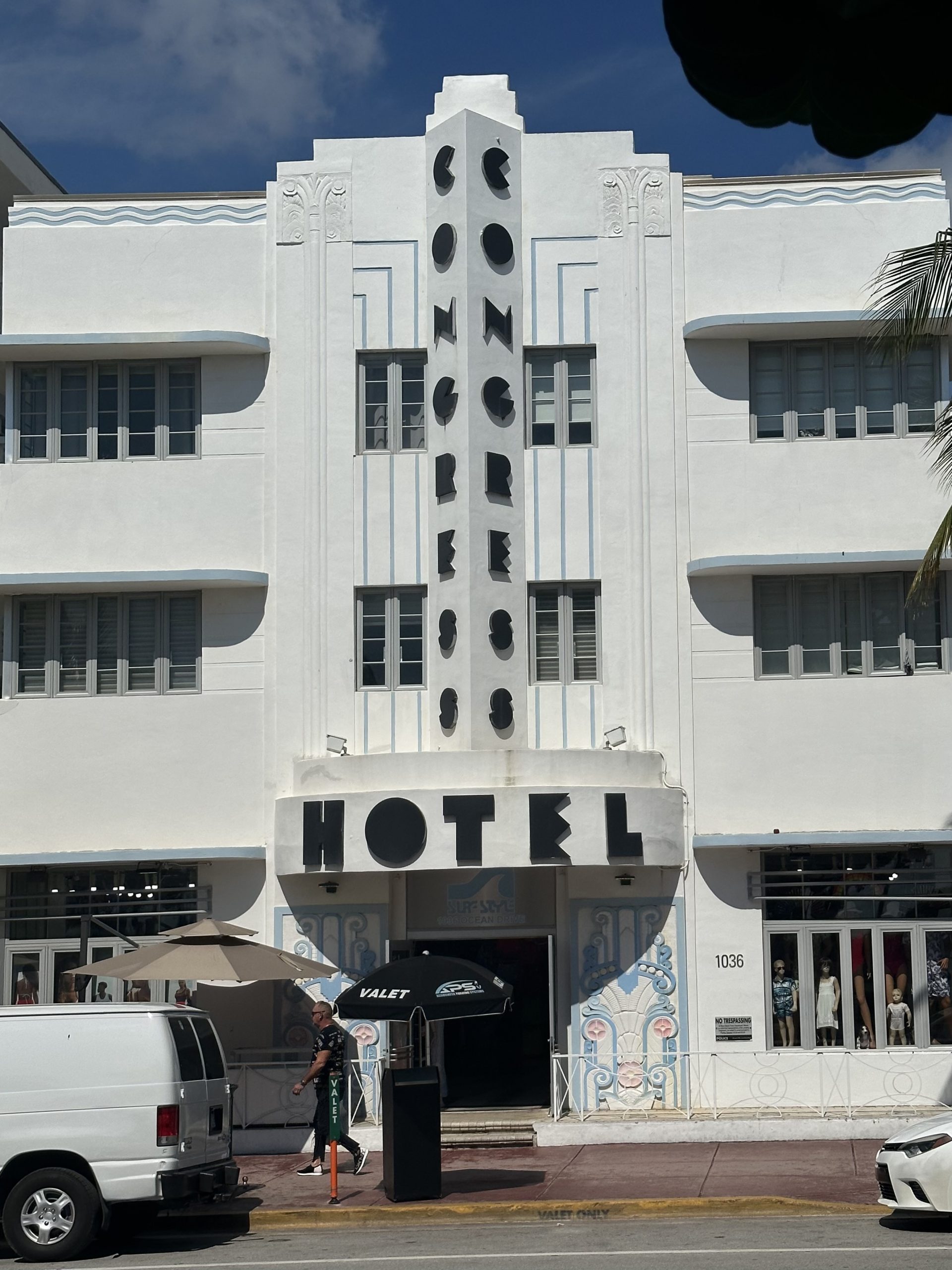
- Frozen Fountain Motif:
- One of the hallmark motifs of Miami’s Art Deco style is the “frozen fountain”—a stylized, symmetrical representation of water frozen in motion. This motif can be found on various buildings in Miami Beach, symbolizing both the Art Deco focus on machine-age aesthetics and Miami’s tropical connection to water.
- Unlike its more serious, metallic, and angular use in European and American cities, the frozen fountain in Miami is often rounded, softer, and adapted to fit into a tropical paradise context.
- Marine and Nautical Themes:
- Miami’s Art Deco style draws heavily on nautical motifs, fitting the city’s coastal location. Porthole windows, ship-like railings, and curved corners that mimic ocean liners are a nod to Miami’s connection to the sea.
- This is especially noticeable in hotels like the Nautilus Hotel and Carlyle Hotel, where design elements suggest the architecture of a grand ship, blending seamlessly with Miami’s identity as a coastal getaway.
- Horizontal Lines and Symmetry:
- Miami’s buildings are often characterized by their horizontal bands, known as “eyebrows,” which help shade windows and enhance the building’s sleek, aerodynamic look. These lines give a sense of movement and flow, making the buildings appear less heavy and more suited for a laid-back beach environment.
- This differs from the more vertical emphasis seen in cities like New York, where skyscrapers stretch upwards in a testament to industrial progress and power.
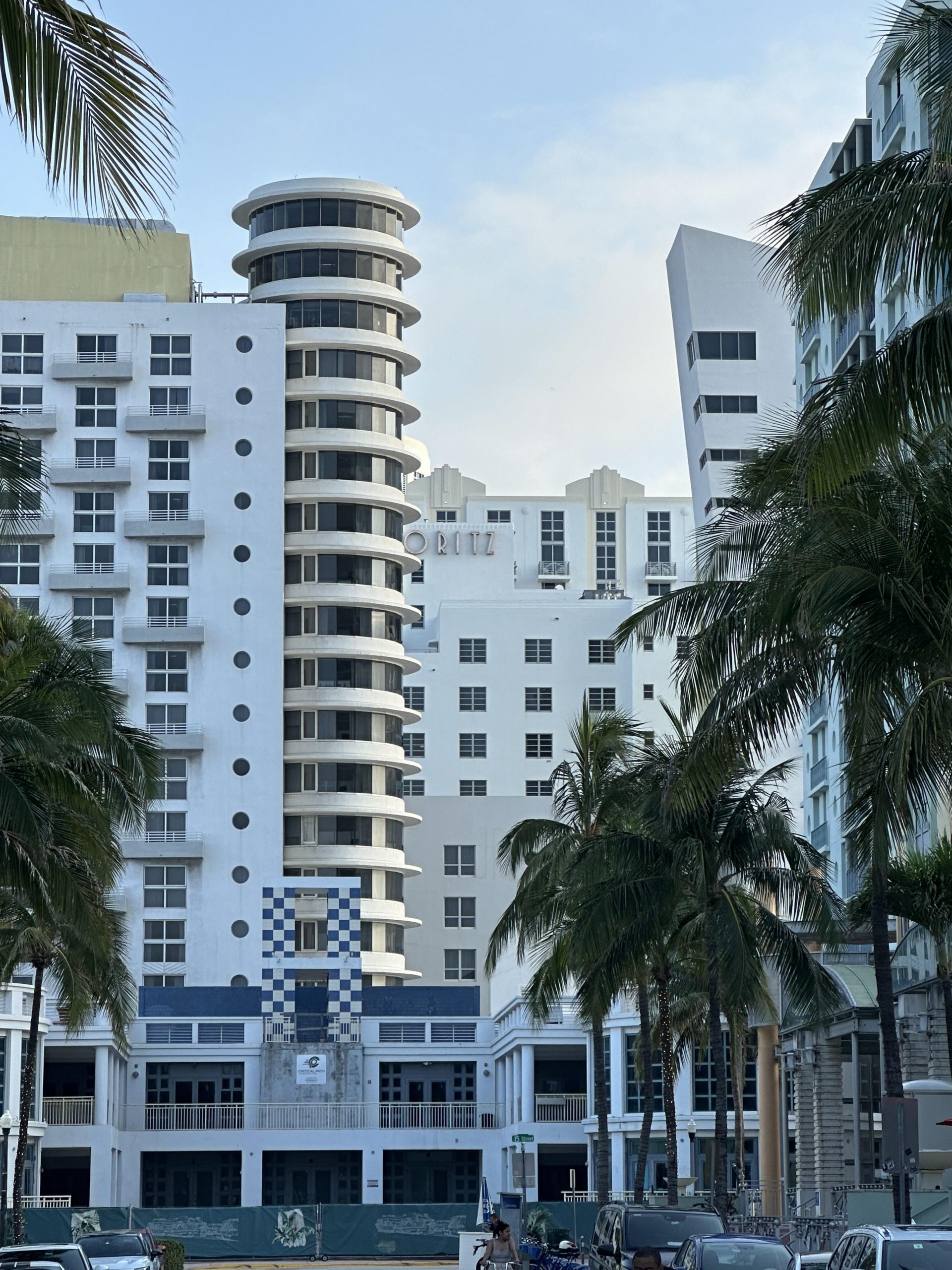
- Functional and Climate-Oriented Features:
- The “eyebrows” and flat roofs found in Miami’s Art Deco are also practical, designed to provide shade and help buildings adapt to the hot and humid climate of South Florida.
- Miami’s climate made it necessary to consider elements like ventilation and heat, influencing the architecture to be more climate-adaptive than many of its global counterparts.
- Preservation and Legacy:
- Miami’s commitment to preserving its Art Deco heritage is another factor that sets it apart from other global Art Deco hubs. The Miami Beach Architectural District, established in the 1970s, was one of the first areas in the U.S. to be recognized for its collection of Art Deco buildings, and ongoing efforts have helped maintain the district’s iconic status.
- In contrast, many other cities saw Art Deco buildings demolished or replaced with modern structures, leading to a loss of original heritage in places like Paris and New York.
Iconic Buildings:
- The Colony Hotel (1935): One of the most recognizable Art Deco buildings in Miami, with its vibrant blue neon lights and symmetrical design.
- The Carlyle Hotel (1939): With its strong vertical bands and classic streamlined look, it perfectly captures the essence of Miami’s Art Deco movement.
- The Breakwater Hotel: Its striking vertical tower, flanked by neon lights and curved “eyebrow” shades, has made it an enduring symbol of Miami’s Art Deco district.
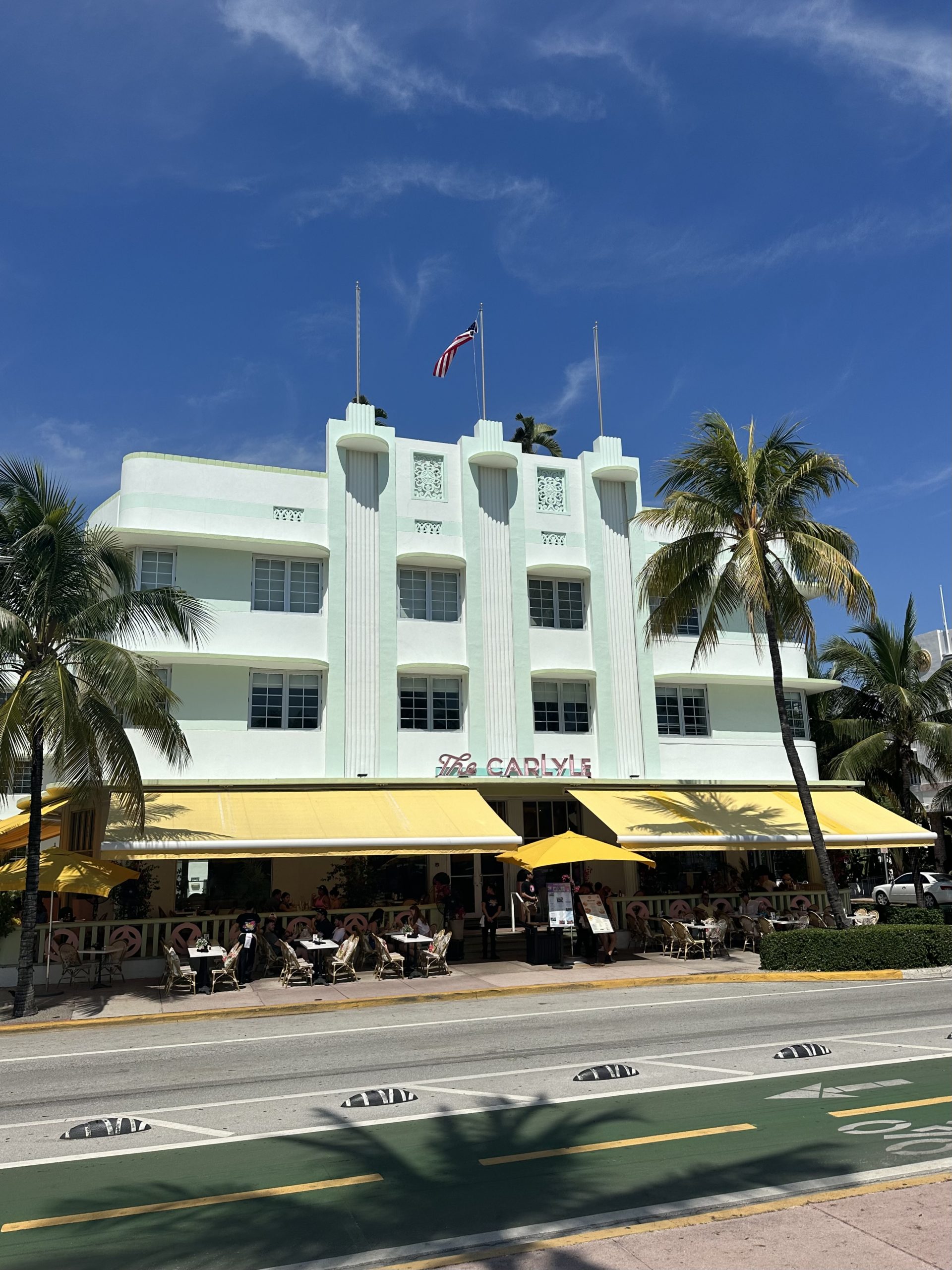
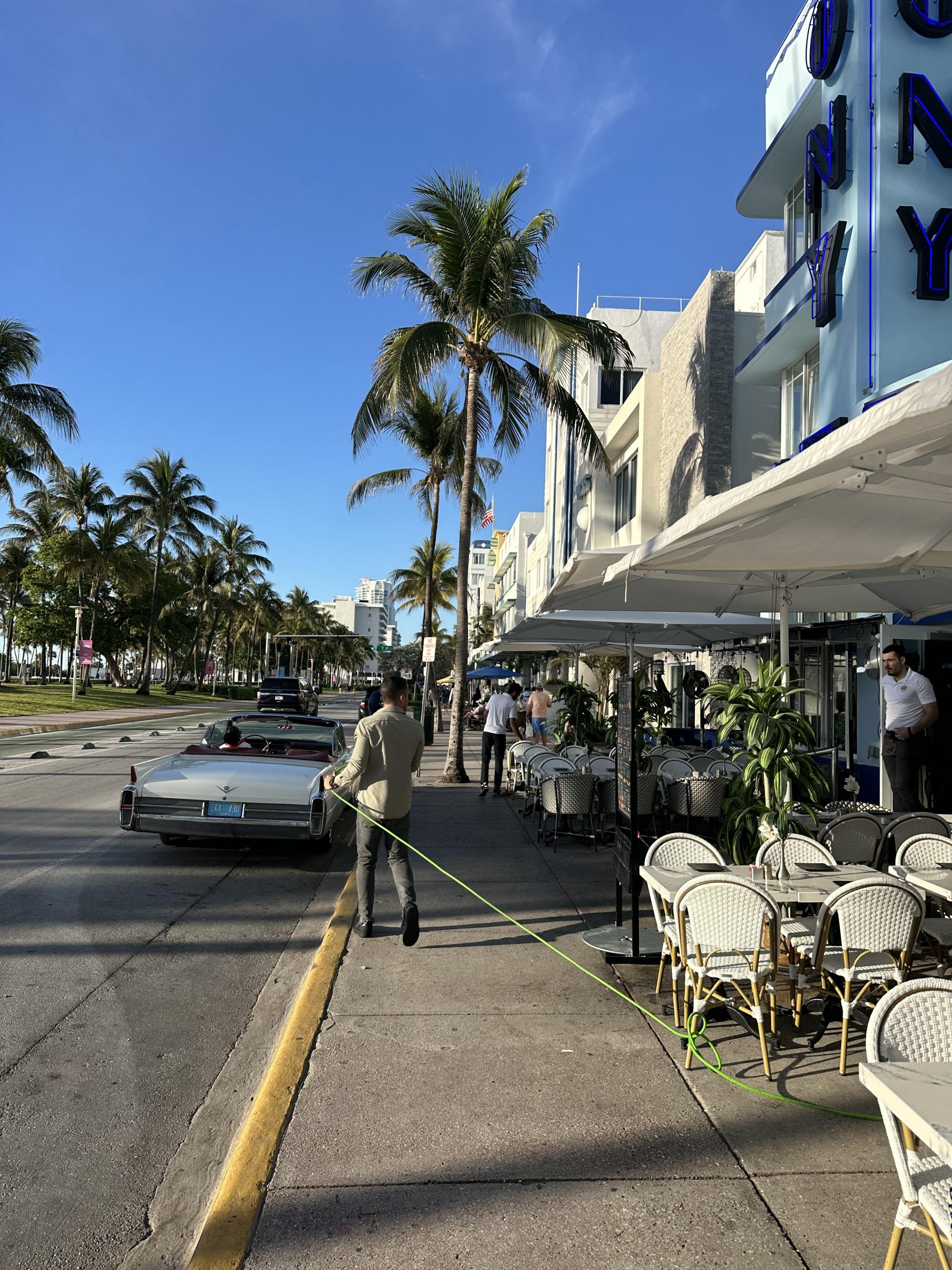
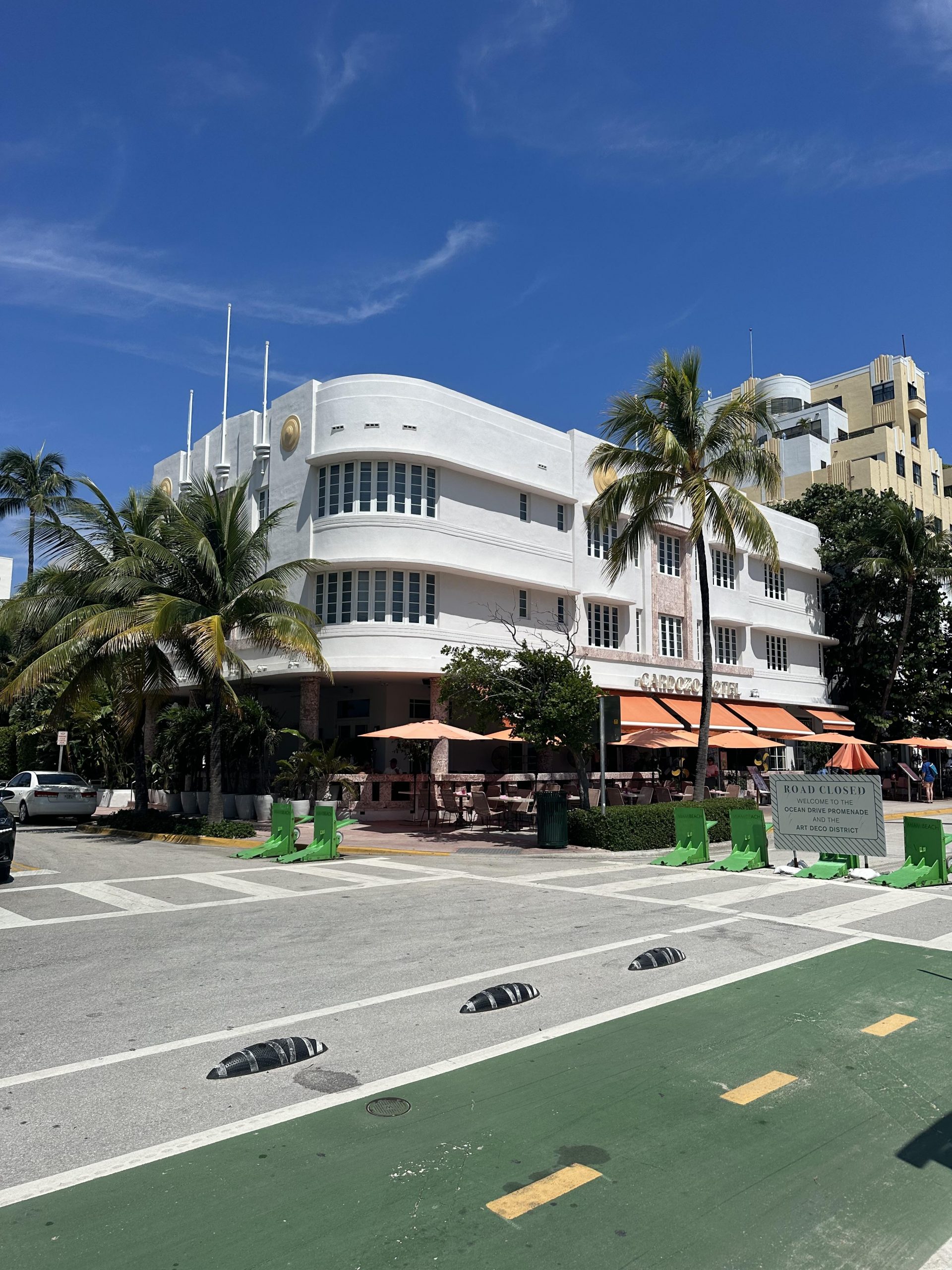
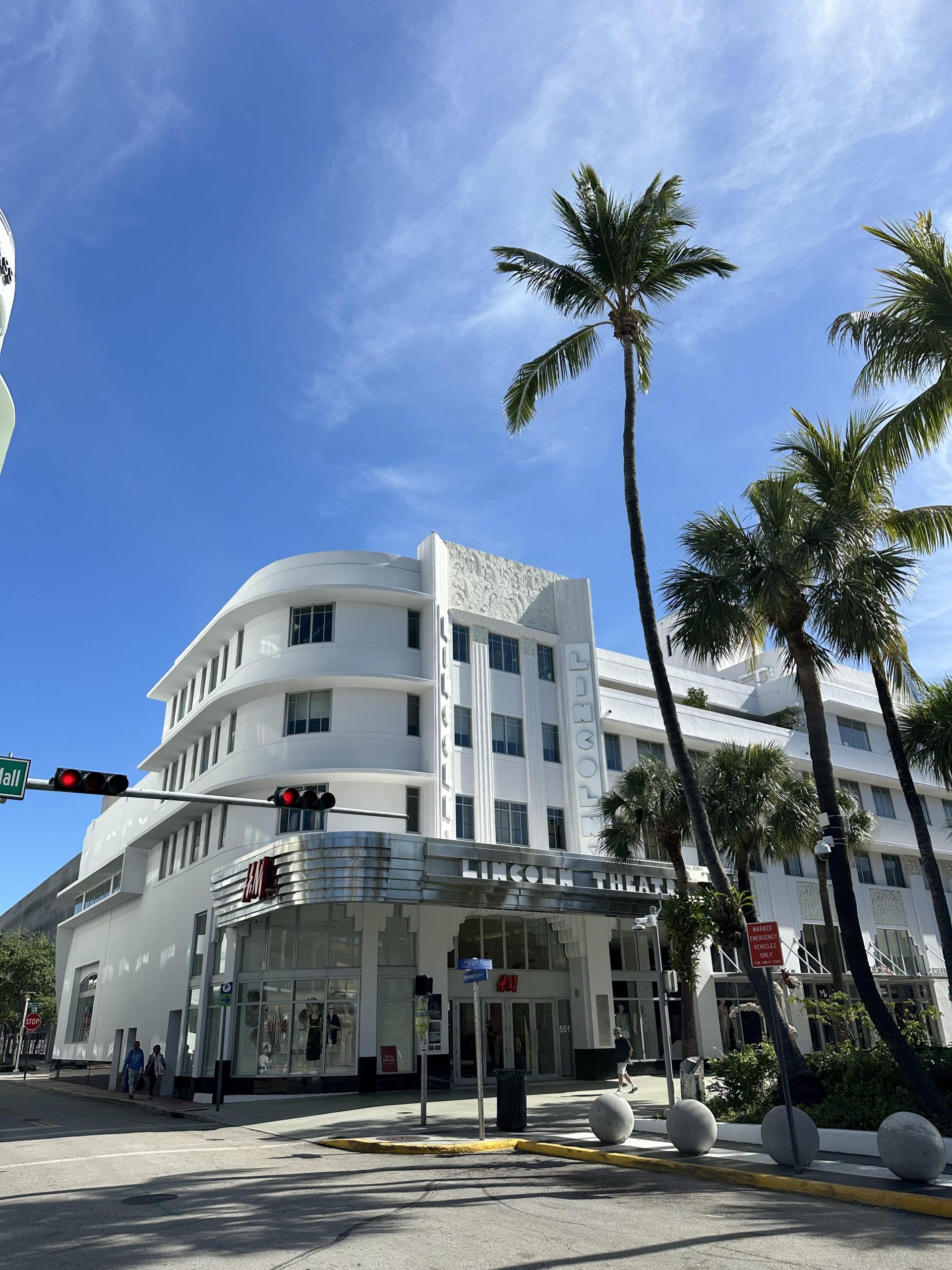
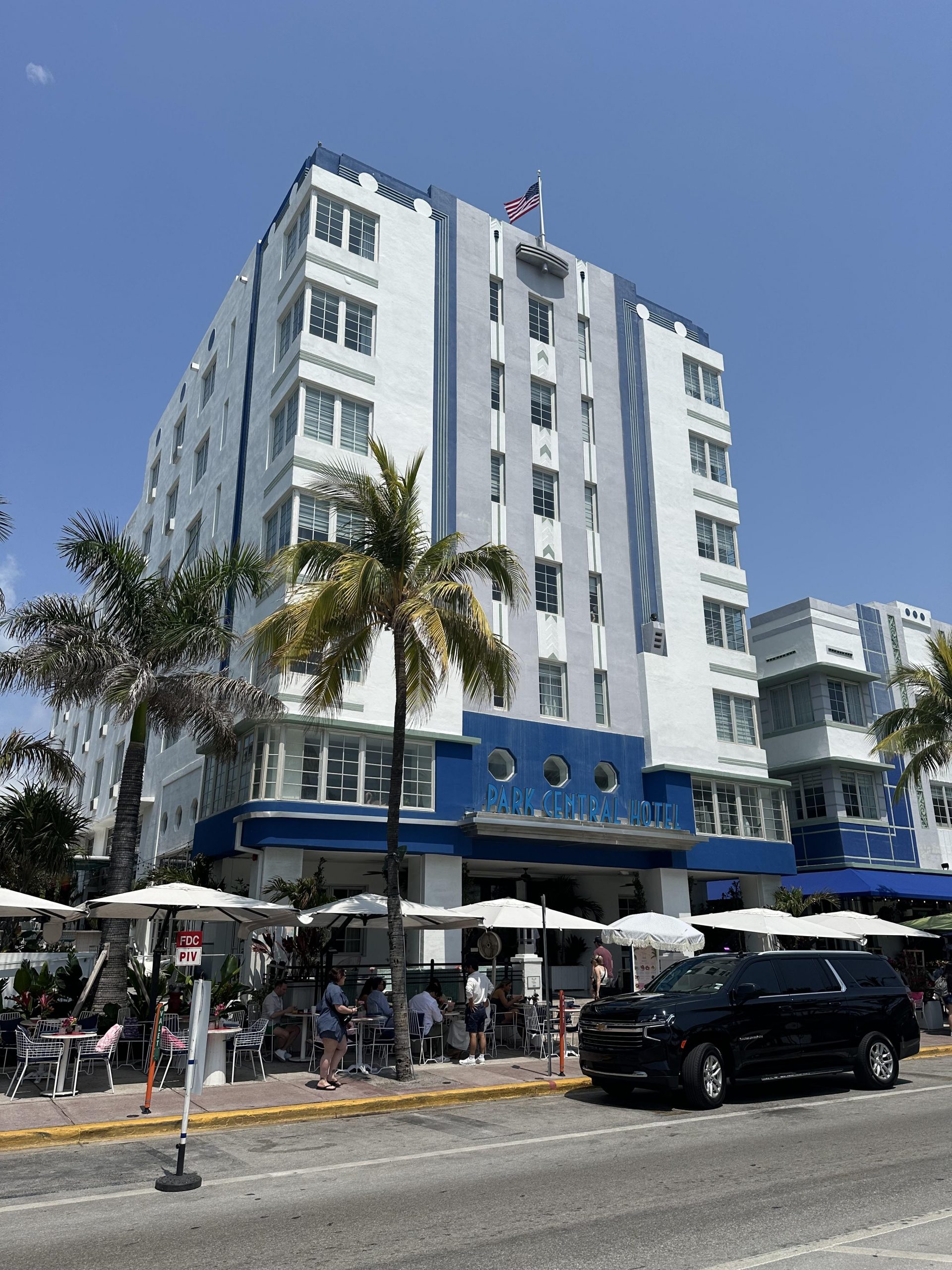
Continuing Appeal:
Today, Miami’s Art Deco architecture continues to captivate visitors and homebuyers alike. It remains an iconic representation of Miami’s identity, blending the elegance of the 1930s with the city’s tropical, carefree atmosphere. The continued preservation of these buildings ensures that Miami’s unique take on Art Deco will remain a symbol of the city’s heritage and allure. The combination of historical significance, aesthetic beauty, and practicality in Miami’s tropical environment makes this version of Art Deco a world treasure.


 Facebook
Facebook
 X
X
 Pinterest
Pinterest
 Copy Link
Copy Link